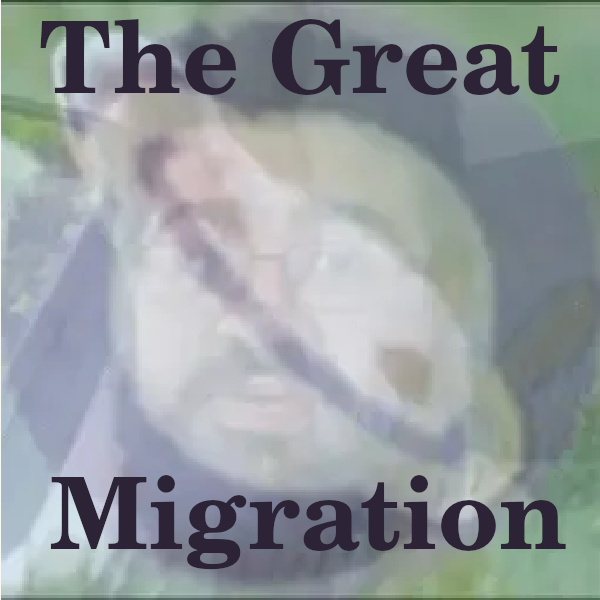Looks like a side blotched lizard (Uta stansburiana) to me.
- 0 Posts
- 22 Comments

 0·13 days ago
0·13 days agoThe Midas’ touch of Sally shit fingers
A few points worth clarifying:
As another user pointed out, pseudoscientific journals and predatory journals aren’t the same. As you pointed out, pseudoscientific journals are generally easy to identify because they have a very clearly stated agenda typically. This means they will publish anything that places their ideas in a favorable light and are generally not objective. They tend to push garbage “science”.
Predatory journals are journals and publishing firms that have what is effectively a pay-to-play scheme, where authors are enticed with minimal peer review at relatively high publishing cost. Meaning, any crappy study can/will be published so long as the authors pay the publication cost. There’s a list online (Beall’s List) of what might be considered predatory.
Now, I will also point out that the authors paying is not what makes this unethical and damaging to science. The vast majority (if not all) scientific publishing is contingent on the authors paying the publication cost and these costs are going to be especially high in open access journals (e.g. PLoS, which is not predatory). These costs are only incurred when the journal agrees to publish after getting positive recommendations from reviewers. Predatory journals forgo the review, and simply publish.
Fraudulent work (i.e., faked data) is likely to be present in any reputable journal, albeit at low frequencies. I say “low” because science is increasingly moving toward an open data model of publication where the raw data sets associated with study must be available publicly, including code used to produce results. While there aren’t loads of people reanalyzing published datasets, the possibility that someone might could be enough to deter most people from making shit up.
I wouldn’t let the Wakefield example spoil the wealth of good studies that’s been published at the Lancet. At this point the only people giving that study any credence are Brain-worms and his ilk. A better bet is to look for retractions issued by the journals. This typically happens in the event of fraud, non reproducibility, fundamental flaws in the study, etc.
Source: I’m an academic scientist and actively publishing.
Tldr: look at Beall’s list for predatory journals; don’t worry too much about fraud in reputable journals; look for retractions if you’re really worried.

 0·2 months ago
0·2 months agoCourse IDs vary from university to university—when I was an undergrad, lower div classes were <100, upper div between 100 and 199, and grad level classes 200+.
Translation:
If someone can be made to smile, let’s keep shining, Hanpen.

 0·3 months ago
0·3 months agoThe otter in the OP is a river otter (probably american river otter)—I’m like 90% sure they do not have pockets. The otter in the comment is a sea otter (in case the watermark didn’t give that away)—they have skin folds that’s often described as pockets near-ish to the armpit.
Neither of them are marsupials—they both belong to the family Mustelidae (which also include badgers, weasels, etc).
SNES for me, and rather frequently.

 0·4 months ago
0·4 months agoBald eagles are sometimes considered kleptoparasites, and I’ve always found that fitting for the USA.

 0·4 months ago
0·4 months agoThe old 4chan way: shoe on head with handwritten date/time stamp.
20%—I feel for tip-based workers, but I’m also not running charity nor am I in a financial place in life to be tipping much higher than that.
If 20% is not in the list I will enter 20%.
When you both shit hard enough together at the same time and wonder to yourselves “was that splashback mine…?”
You forgot to mention that the movie you’re watching is “The Land Before Time”
I’m going to qualify this—all vertebrate eyes have a blind spot. Cephalopods also have eyes that are like vertebrates (this type of eye is called ‘camera eyes’), but their eye anatomy is such that no blind spot exists for them.
Piggybacking on your fact about the brain effectively editing what we visually perceive, we don’t see our nose (unless you made a concerted effort to look at it) because the brain ignores it.
A crow eating chicken and a human eating beef are actually really good parallels. Crows and chicken are 91 million years diverged while cows and humans 94 million years diverged.

 0·5 months ago
0·5 months agoI grew up in the 90s and went to public school, so I didn’t have this experience. What I did experience was using the shittiest scissors in the classroom, and having to share it with 3 other kids because there was exactly one left handed pair.
Also lots of criticism about my handwriting.
CMD ` (backtick) will switch between application windows, if that’s what was frustrating you.
Was this ‘foreign object’ a certain social media founder’s rat penis?






Many biologists (myself included) don’t anthropomorphize animals because it’s impossible to objectively quantify things like “culture”. So, my opinion is that some fish change sex, and not their gender (because fish don’t have genders, which are human social constructs).
Happy to be corrected if I’m off-base. I’m not an ichthyologist.